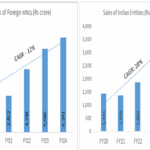7-10million people of 8billion global population affected by the disorder
The below article has been authored by Dr. Manish Gupta, Executive Consultant of Neurology Department, Jaypee Hospital.
New Delhi, April 10, 2018: Parkinson’s disease (PD) is a long-term degenerative disorder of the central nervous system that causes a loss of cells in the part of the brain that controls movement. It is both chronic and progressive, meaning that once it occurs it does not go away and symptoms generally get worse over time; the rate or speed of progression varies from person to person.
Parkinson Disease (PD) is a neurodegenerative disorder that affects motor and non-motor functions due to a lack of dopamine in the brain. Dopamine allows nerve impulses to travel smoothly from one cell to the other. When dopamine is reduced, the messages from the brain to the nerve cells aren’t properly transmitted, resulting in the recognizable tremors, rigidity and slowness of movement in PD patients.
Parkinson’s disease was first characterized extensively by a London physician, James Parkinson, in 1817. In just under 200 years it has become the second most common neurogenic disorder affecting approximately 1% of the world population over 50 years old.
CAUSES OF PARKINSON’S DISEASE
Environmental toxins: Despite no conclusive evidence that this is a cause, some scientists believe that an internal or external toxin affects the body’s ability to produce dopamine. One need to be vigilant about MPTP, pesticides such as paraquat and rotenone, metal or organic toxins and manganese porsonium used in welding as these can accelerate parkinson’s disease.
Accelerated ageing: One theory is that in some individuals, for some unknown reason, the normal, age-related death of the neurones that produce dopamine is accelerated.
Free Radicals: Some researchers believe that the neurones that produce dopamine die due to the activity of free radicals. Free radicals are potentially damaging molecules produced in the body during normal chemical reactions.
Genetic factors: Specific gene mutations that can cause Parkinson’s disease have been identified if onset is early than the age of 50yrs. These are uncommon, except in rare cases with many family members affected by Parkinson’s disease. There also exist certain gene variations that appear to increase the risk of Parkinson’s disease
SIGNS AND SYMPTOMS
The distinctive symptoms of Parkinson’s disease include:
Tremor: Most people with Parkinson’s disease develop a tremor that is most prominent in the hands and fingers. It tends to occur when the limb is relaxed (a resting tremor). Some people with Parkinson’s disease never develop a tremor.
Stiffness: Stiffness or rigidity is a common early sign of Parkinson’s disease and is most obvious in the arms, shoulder or neck, although it can occur in all muscle groups. People may have difficulty getting out of a chair, turning or rolling over in bed, or walking. Fine finger movements such as doing up a button or tying a shoelace may also be difficult. Pain or a deep aching sensation in the muscles may also be felt.
Bradykinesia: This means slowness of movement. People have difficulty initiating movement and movement may be slow. There may also be a lack of coordination while performing normal activities. Bradykinesia can also make the face seem flat or expressionless.
Loss of Balance: This is a symptom that tends to develop later in Parkinson’s disease. Because of impaired balance and co-ordination (postural instability) a person with Parkinson’s disease can develop a forward or backward lean. They may start to walk with small steps as if hurrying forward to keep balance. Frequent falls are also common.
Parkinsonian gait: A parkinsonism gait is the manner of walking that is seen in patients with parkinsonism. Individuals with more progressive Parkinson’s disease develop a distinctive shuffling walk with a stooped position. It may become difficult to start walking and to make turns.
Postural instability: Impaired or lost reflexes can make it difficult to adjust posture to maintain balance.
Secondary symptoms of Parkinson’s disease
While the main symptoms of Parkinson’s disease are movement-related, progressive loss of muscle control and continued damage to the brain can lead to secondary symptoms. These vary in severity, and not every individual will experience all of them. Some of the secondary symptoms include:
- Anxiety, insecurity, and stress
- Confusion, memory loss, and dementia (more common in elderly individuals)
- Constipation
- Depression
- Difficulty swallowing and excessive salivation
- Diminished sense of smell
- Increased sweating
- Male erectile dysfunction
- Skin problems
- Slowed, quieter speech, and monotone voice
- Urinary frequency/urgency
5 STAGES OF PARKINSON ‘S DISEASE
Stage 1. Symptoms are mild and do not interfere with the person’s quality of life.
Stage 2. Symptoms worsen and daily activities become more difficult and take more time to complete.
Stage 3 is considered mid-stage Parkinson’s disease. The individual loses balance, moves more slowly, and falls are common. Symptoms impair daily activities, for example, dressing, eating, and brushing teeth.
Stage 4. Symptoms become severe and the individual needs assistance for walking and performing daily activities.
Stage 5 is the most advanced stage of Parkinson’s disease. The individual is unable to walk and will need full time assistance with living.
DIAGNOSIS
An early and accurate diagnosis of Parkinson’s disease is important in developing good treatment strategies to maintain a high quality of life for as long as possible. However, there is no test to diagnose Parkinson’s disease with certainty. A diagnosis of Parkinson’s disease – especially in the early phase – can be challenging due to similarities to related movement disorders and other conditions with Parkinson-like symptoms known as Parkinson plus syndrome as these conditions are not drug responsive.
An initial assessment is made based on medical history, a neurological exam, and the symptoms present. For the medical history, it is important to know whether other family members have Parkinson’s disease, what types of medication have been or are being taken, and whether there was exposure to toxins or repeated head trauma previously. A neurological exam may include an evaluation of coordination, walking, and fine motor tasks involving the hands.
TREATMENT
Always consult a neurologist if you have any of the symptoms associated with Parkinson’s disease.
Medical Treatment: Since Parkinson’s disease is both chronic and progressive, meaning that once it occurs it does not go away and symptoms generally get worse over time, you must take medicines for the rest of your life. PD drugs are usually introduced in low doses and are gradually increased over weeks or months. PD drugs often take several months to develop their full beneficial effects. So, you have to be patient
Surgical Option: Surgical therapies may be considered during the course of Parkinson’s disease (PD), especially if symptoms cannot be adequately controlled with medication. Deep brain stimulation (or DBS) is the main type of surgery used to treat Parkinson’s including tremors, stiffness, and trouble walking. It can also treat side effects of Parkinson’s medicines.







